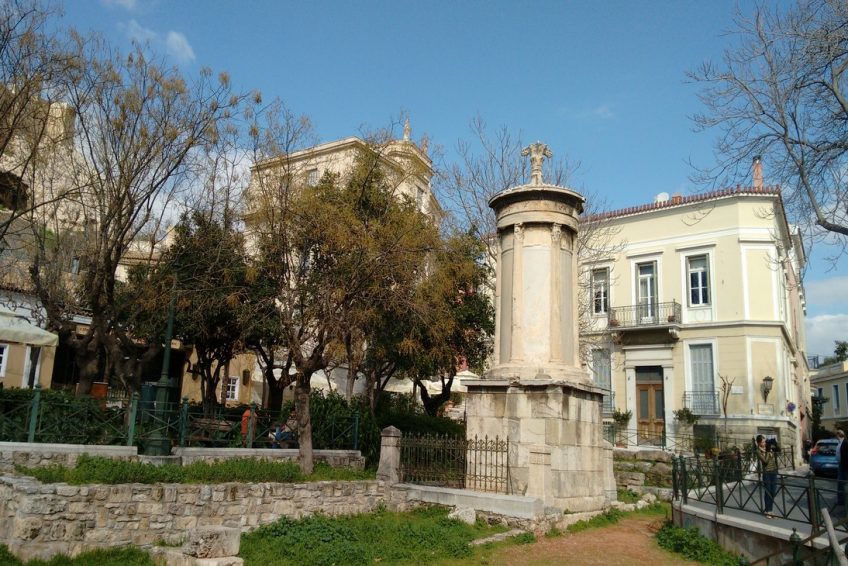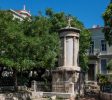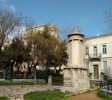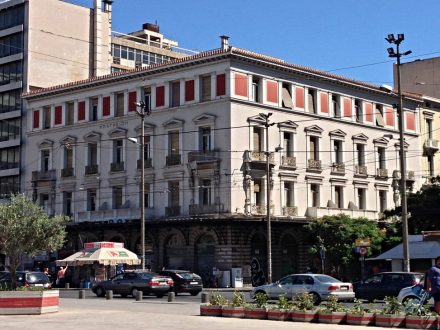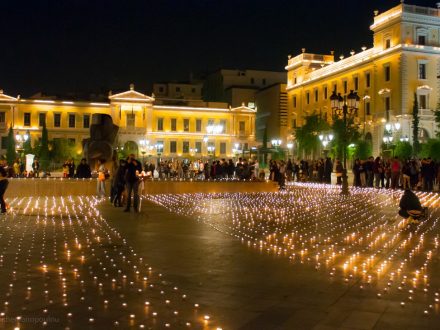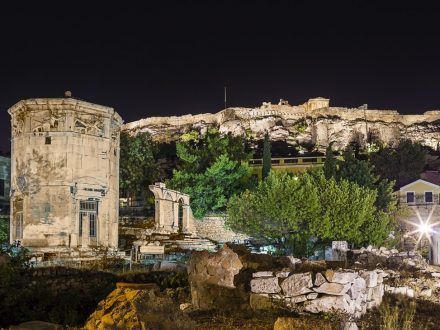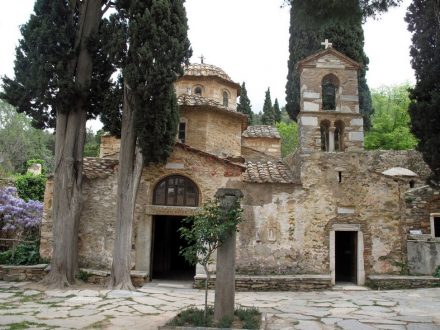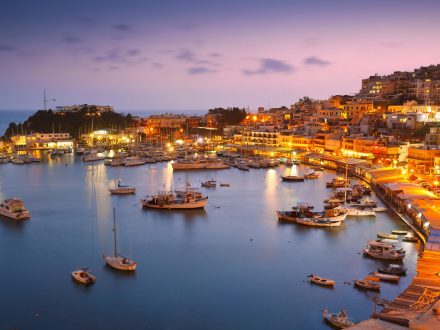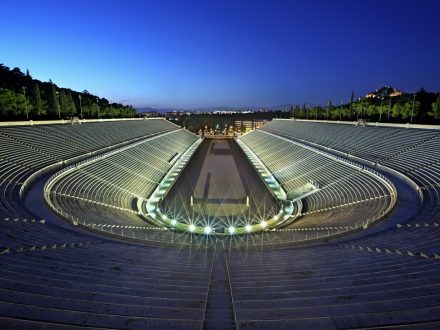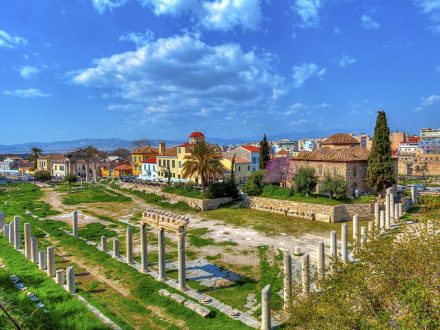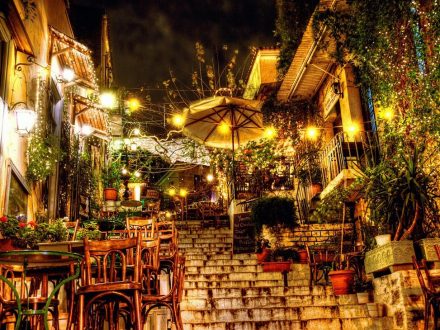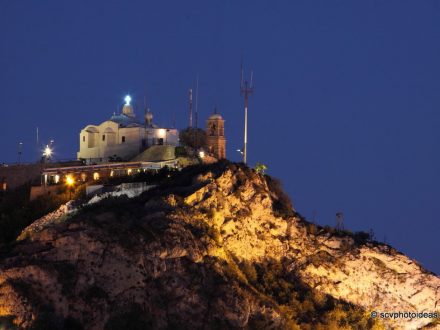Monument of Lysicrates
Athens 105 58, GreeceChoregic monument erected on the west side of the Street of the Tripods, by Lysikrates, in 335/34 B.C., according to an inscription preserved on the architrave. The circular building rests on a square podium of poros stone (2,93 m. long on each side), and consists of six Corinthian columns of Pentelic marble alternating with panels of Hymettian marble. The columns are among the earliest examples of the use of the Corinthian order in Athens. The monument is decorated with a frieze depicting scenes from the life of Dionysos. The upper surface of the monolithic roof was ornamented with carved leaves that ended at an acanthus-shaped base which supported the choregic tripod, not preserved today. The monument, known also as the “Lantern of Diogenes”, was incorporated in the Capucin monastery in 1669, and was used by the monks as a reading-room and library. The monks opened an entrance by removing one of the panels on the northwest side. The monastery was destroyed during the Greek Revolution in 1821.
Reference: http://odysseus.culture.gr
Choregic monument erected on the west side of the Street of the Tripods, by Lysikrates, in 335/34 B.C., according to an inscription preserved on the architrave. The circular building rests on a square podium of poros stone (2,93 m. long on each side), and consists of six Corinthian columns of Pentelic marble alternating with panels of Hymettian marble. The columns are among the earliest examples of the use of the Corinthian order in Athens. The monument is decorated with a frieze depicting scenes from the life of Dionysos. The upper surface of the monolithic roof was ornamented with carved leaves that ended at an acanthus-shaped base which supported the choregic tripod, not preserved today. The monument, known also as the “Lantern of Diogenes”, was incorporated in the Capucin monastery in 1669, and was used by the monks as a reading-room and library. The monks opened an entrance by removing one of the panels on the northwest side. The monastery was destroyed during the Greek Revolution in 1821.
Reference: http://odysseus.culture.gr
 MomixKeleou 1, Athina 104 35, Greece
MomixKeleou 1, Athina 104 35, Greece Ayurveda HellasNikis 28, Athina 105 57, Greece
Ayurveda HellasNikis 28, Athina 105 57, Greece Wabi SabiKaniggos 10, Athina 106 77, Greece
Wabi SabiKaniggos 10, Athina 106 77, Greece Constant BagsErmou 6, Athina 105 63, Greece
Constant BagsErmou 6, Athina 105 63, Greece La EsquinaCharitos 43, Athina 106 73, Greece
La EsquinaCharitos 43, Athina 106 73, Greece BrunelloLoukianou 21, Athina 106 75, Greec...
BrunelloLoukianou 21, Athina 106 75, Greec... MelikriniAsklipiou 14, Athina 106 80, Greec...
MelikriniAsklipiou 14, Athina 106 80, Greec... Fabrica De VinoEmmanouil Benaki 3, Athina 105 64,...
Fabrica De VinoEmmanouil Benaki 3, Athina 105 64,... School Life and Education MuseumTripodon 23, Athina 105 58, Greece
School Life and Education MuseumTripodon 23, Athina 105 58, Greece Zafran Indian RestaurantΠερσεφόνης 25, Αθήνα...
Zafran Indian RestaurantΠερσεφόνης 25, Αθήνα...




